Best TV (2022) | ZDNet
With so many brands, screen sizes, and panel types available, it can be hard to know which is the best TV you can buy. Brands like LG and Sony are known for their high-end OLED models, which produce some of the best picture quality you can get your hands on outside of a professional cinema. Samsung and Hisense have really solid mid-range options with features like Dolby Vision HDR support, dedicated game modes, and adaptive sound. TCL is known for its budget-friendly models, even at bigger screen sizes, and its use of the Roku platform for a more streamlined browsing experience while flipping through apps.
I’ve combed the web to find the very best TVs available, and I’ve broken down their features and price points to help you find the one that best fits both your budget and your entertainment needs.
Also: Best TV deals: Sony, Samsung, LG, TCL, and more
LG QNED MiniLED 8K TV
Best TV
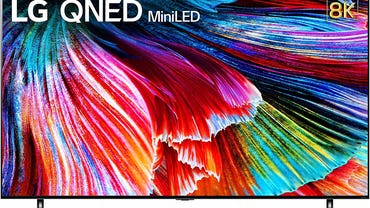
Screen size: 65-inches | Panel type: miniLED | Refresh rate: 120Hz | HDR: Dolby Vision IQ, Cinema HDR | Resolution: 8K
This isn’t the first 8K TV from LG, but it is the most affordable. And, frankly, it’s loads better than the ultra-expensive Signature ZX model. This TV gives you four times the resolution of a 4K model and 16 times that of 1080p HD; this means you’ll get even better detailing, color, and contrast for watching movies, shows, and sports. The 4th gen a9 processor uses AI for upscaling non-8K content, so even though there isn’t anything to stream in native 8K, you can still get great value out of this screen. You can augment your new, fancy TV with a custom speaker setup with 5.1CH speaker support as well as LG’s AI Sound Pro which works with ambient sensors to automatically adjust sound settings and volume to suit your space. And while it doesn’t use an OLED panel (which would make this an astronomically expensive TV), the miniLED panel still gives you excellent color volume and lifelike images.
Pros:
- Future-proof your home theater
- AI-upscaling
- 5.1CH support
- Adaptive sound
Cons:
- No native 8K content to stream
LG C1
Best OLED TV
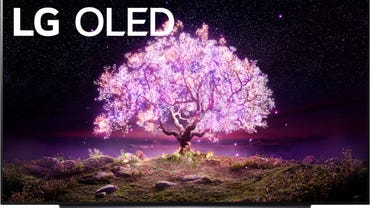
Screen size: 77-inches | Panel type: OLED | Refresh rate: 120Hz | HDR: Dolby Vision IQ, HDR10 | Resolution: 4K
The 77-inch LG C1 got a rave review from us, and it’s easy to see why. The OLED panel produces some of the most vibrant colors, crisp detailing, and deep black contrast you can get. And with support for both HDR10 and Dolby Vision IQ, you’ll be hard-pressed to find a TV with better picture quality. The speakers work with Dolby Atmos for virtual surround sound and you can create a custom home audio setup with 5.1CH wireless speaker support. The voice-enabled remote works with both Alexa and Hey Google for hands-free controls, and movie buffs will love the Filmmaker Mode which analyzes movies scene-by-scene and presents them as their creators intended.
Pros:
- Excellent picture quality
- Dolby Vision IQ support
- Dolby Atmos support
- 5.1CH surround sound support
Cons:
- Pricey
- No AirPlay or Chromecast support
Samsung QN90A
Best value
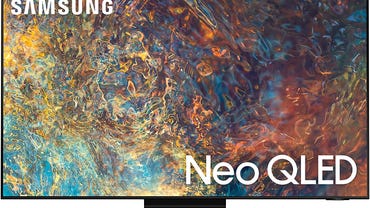
Screen size: 65-inches | Panel type: QLED | Refresh rate: 120Hz | HDR: Quantum HDR 32X | Resolution: 4K
The Samsung QN90A is an excellent, well-rounded smart TV to build a home theater around. The 65-inch QLED panel has a native refresh rate of 120Hz for smoother playback as well as 4K resolution for enhanced detailing. The updated processor uses machine-learning algorithms to analyze shows and movies scene-by-scene to provide the cleanest picture in either native or upscaled 4K. The QN90A also uses Object Tracking Sound to create immersive, 3D audio that tracks the action on screen for a more cinematic experience. They also work with integrated ambient sensors to automatically adjust volume and sound settings to suit your space and boost dialogue in noisy environments.
The voice-enabled remote works with Alexa, Hey Google, and Samsung’s Bixby for hands-free controls. The Multi View feature lets you watch multiple video sources at once, and Tap View lets you instantly share content from your Samsung mobile device by touching it to the TV. This model also has a dedicated GameView feature that lets you monitor framerate, refresh rate, input response time, and VRR modes in real-time so you can catch issues before they ruin your gameplay.
Pros:
- Object tracking sound
- VRR support
- Ambient sound sensors
Cons:
- No Dolby Vision or Dolby Atmos support
TCL 4-Series Roku TV
Best budget-friendly TV
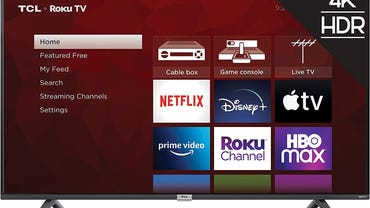
Screen size: 50-inches | Panel type: LED | Refresh rate: 60Hz | HDR: HDR10 | Resolution: 4K
TCL is the king of budget-friendly TVs, and just because the 50-inch 4-Series is a bargain, that doesn’t mean that it’s not a great TV. It runs on the Roku platform, giving you access to hundreds of thousands of streaming apps like Netflix, Disney+, and Hulu; the simplified hub menu puts all of your favorite apps and connected devices in one place for easier navigation. That means you don’t have to navigate confusing menus or memorize inputs. The TV works with both Alexa and Hey Google for voice controls, or you can download the Roku companion app to turn your smartphone or tablet into a voice-enabled remote. The 4K resolution screen has a native refresh rate of 60Hz, which makes the action in movies, shows, and sports smoother so you never miss a second of what’s happening. It also features an HDMI ARC input for connecting a soundbar for enhanced audio.
Pros:
- Under $500
- Roku platform
- HDMI ARC
- Voice controls
Cons:
- No Dolby Vision/Dolby Atmos support
- No Bluetooth connectivity
More: Best soundbar 2022: Turn up the music
Sony BRAVIA XR A90J OLED TV
Best luxury TV
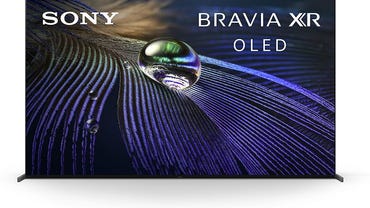
Screen size: 83-inches | Panel type: OLED | Refresh rate: 120Hz | HDR: Dolby Vision, HDR10 | Resolution: 4K
If money is no object in your quest to obtain the very best when it comes to home entertainment, the Bravia XR A90J 83-inch OLED TV from Sony is your best option. This truly gigantic screen produces some of the best 4K resolution, color, contrast, and detailing you can get from a TV. It has support for Dolby Vision and HDR10 as well as Dolby Atmos for a more cinematic experience at home. It also uses Sony’s Acoustic Surface Audio+ technology to turn the entire screen into a speaker for near-perfect audio and video syncing. Movie buffs will love the IMAX Enhanced and Netflix Calibrated modes, and gamers will love that it’s optimized for use with the PlayStation 5; you’ll get VRR support over HDMI 2.1 inputs as well as up to 120fps.
Pros:
- Excellent picture quality
- Optimized for PlayStation 5
- VRR support
- Dolby Vision/Dolby Atmos support
- Acoustic Surface Audio+
Cons:
- Insanely expensive
- Very heavy
Hisense 55U6G QLED Android TV
Best mid-range option
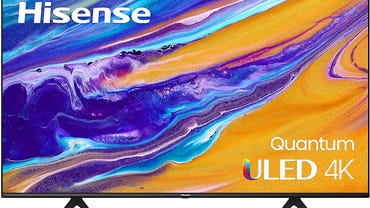
Screen size: 55-inches | Panel type: QLED | Refresh rate: 60Hz | HDR: Dolby Vision | Resolution: 4K
Hisense is a Chinese brand, similar to TCL, that has started to gain popularity for their mid-range TV options, and their 55-inch ULED Premium Android TV is a model example of their quality. It features support for both Dolby Vision and Dolby Atmos, and it has 36 dimming zones to enhance contrast. It runs on the Google TV operating system, not only giving you access to all of your favorite streaming apps, but also voice commands via Hey Google; it also works with Alexa for Echo users. With Chromecast built-in, you can share videos, photos, and music from your mobile device for more ways to watch movies and shows with friends. It also features 4 HDMI ports for connecting your game consoles, cable boxes, and playback devices.
Pros:
- Dolby Vision/Dolby Atmos support
- Voice controls
- Plenty of HDMI connections
Cons:
- Somewhat disappointing refresh rate
What size TV do I need?
The best way to find the ideal TV screen size is to measure the distance (in inches) between your couch and where the TV will be wall-mounted or placed on a dedicated stand and divide that distance by 2. So if your couch is 120 inches (10 feet) from where the TV will be, the ideal size would be 60 inches. You can always go a bit bigger or smaller depending on what’s available from brands and what your budget is, but you don’t want to go wild and get a huge screen if you don’t need to. Not only do you run the risk of having your new, expensive, TV just simply not fit into your space, a screen that is too big can overwhelm a room and even cause motion sickness. And on the other end of the spectrum, smaller screens do tend to be more affordable, but a TV that’s too small for a room can make the space feel cavernous and force everyone to crowd around in order to see.
What is the best TV?
The best TV is the LG QNED MiniLED 8K TV. Our top pick has top-notch picture and sound quality and the highest possible screen resolution, perfect for your living room or home theater.
Is it worth buying an 8K TV?
As of right now, I’m inclined to say no. Not only are 8K televisions very expensive, there isn’t any 8K content available over broadcast, streaming, or gaming outlets to justify buying one. A conservative estimate would say that 8K streaming and gaming will be available within the next 5 years or so, but it will require a very fast internet connection to handle the bandwidth needed to consistently stream in ultra-high definition. If you’ve always been an early adopter of tech and want to get a jump on future-proofing your home theater, and you have cash to burn, you might get more value out of an 8K television than someone who just wants to be able to watch The Witcher after work.
What’s the difference between OLED and QLED?
Both panel types use the same basic principles to create images you see on the TV screen: a power source, a light source, and a color source. The key differences lie in exactly how these panels get power, light, and color. A QLED screen, mostly seen in Samsung, TCL, and Hisense models, uses a modified LED panel and a “quantum dot” screen to create images. The “quantum” in QLED seems to be more of a catchy marketing term than an allusion to actual quantum tech, but it does give you enhanced color and detailing over a regular LED display. An OLED panel, found in LG, Sony, and Vizio TVs, uses an array of mini LED lamps that are individually lit as well as organic substrates for color. The individually lit LEDs allow for true blacks to create stunning contrast and make colors pop. It’s an expensive technology to produce, so OLED TVs are going to be pretty pricey, but if picture quality is your top priority, they’re a worthwhile investment. You can read about the differences between QLED and OLED televisions over at CNET for a more in-depth explanation.

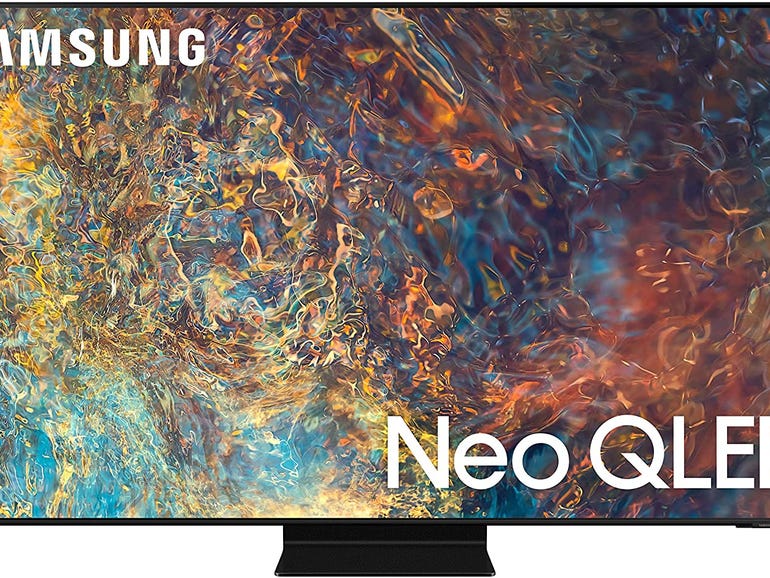

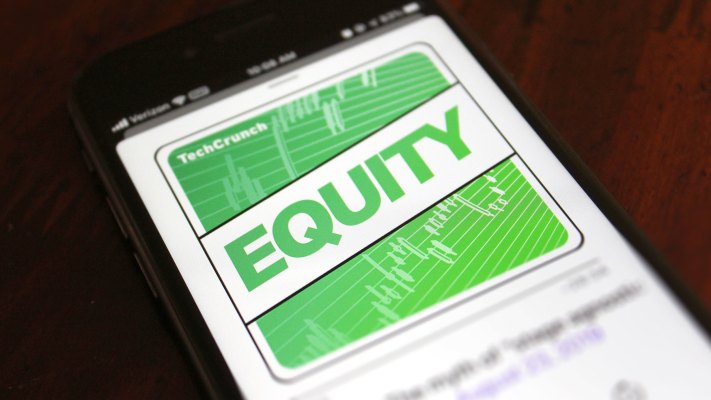

Pingback: hardcore gayporn